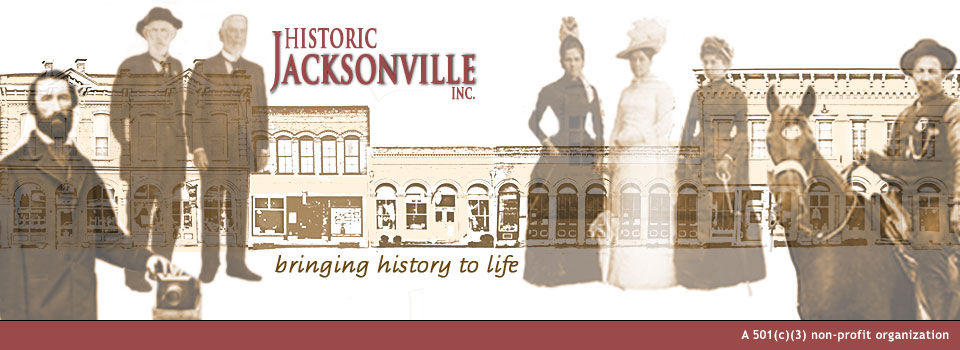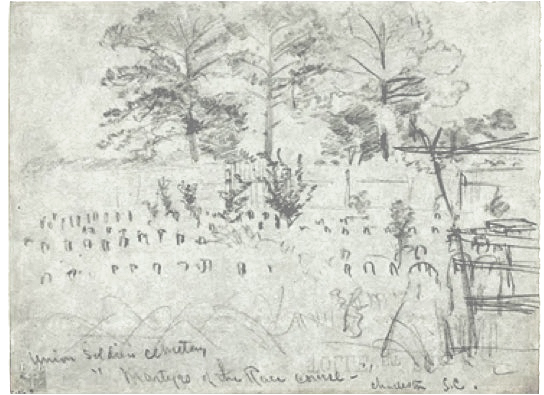Memorial Day
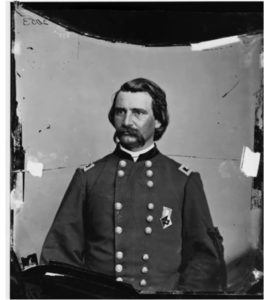 Civil War General John A. Logan Civil War General John A. LoganPhoto Source: Library of Congress, Glass Negatives |
The history of Memorial Day is a matter of some long-standing controversy, at least as to its origin. While scholars agree that U.S. Army General John A. Logan established a national holiday in 1868 for “decorating the graves of comrades who died in defense of their country,” the controversy arises as to where he got the idea. Apparently he couldn’t have come up with it on his own, according to history, so here we’ll have a look at some of the possible origins.
The earliest documented observance of Memorial Day, or Decoration Day as it was then known, occurred in 1865 in Charleston, South Carolina. The Civil War was ending, and the Confederate Army fled Charleston, leaving behind a racetrack/country club which had been converted into a prison for captured members of the United States Army. More than 260 U.S. Army soldiers had died of exposure or disease while being held in the racetrack’s open-air infield, their bodies hastily buried in a mass grave.
|
|
After the Confederates fled the city, those freed from enslavement remained, and one of the first things they did was give the fallen U.S. Army prisoners a proper burial. The mass grave was exhumed, and the bodies were reinterred in a new cemetery. Then in a May 1st. 1865 May Day celebration, a crowd of 10,000 people, mostly freed slaves, staged a parade around the racetrack, to honor the dead U.S. soldiers. Reported in both the New York Tribune and the Charleston Courier, this event would be the earliest Memorial Day commemoration on record.
Others argue that the observance began a year later, in 1866, when women in Columbus, Georgia decorated the graves of their Confederate dead, and also some of the United States dead as well. Amazingly, word of this got out and reached as far as the North, where some newspapermen decided to treat such conduct as an olive branch; an effort to conciliate the United States with the insurrectionists. One reader of such reports, Francis Miles Finch, was inspired by the story to write a poem titled “The Blue and the Gray,” published in The Atlanticin 1867, in which he expressed his personal forgiveness to the insurrectionists based on his belief that some person or persons in the South had laid laurels on the graves of the United States dead.
 Photo Source: CardCow.com
Photo Source: CardCow.com
At least twenty towns boast that they are the “birthplace” of Memorial Day, but only Waterloo, New York has legislation signed by a President declaring it the “official” birthplace of Memorial Day, based on an 1866 celebration there (President Lyndon Johnson signed this legislation in 1966).
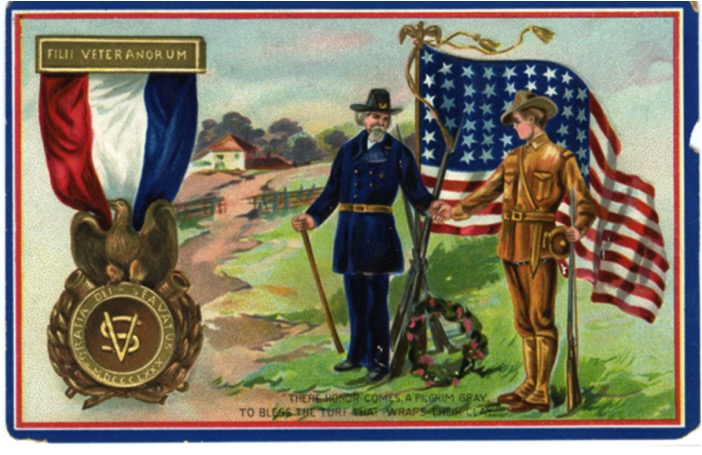 Photo Source: Pasadena Museum of History
Photo Source: Pasadena Museum of History
Regardless of where it began, the first Memorial Day was observed on May 30, 1868, at Arlington National Cemetery, when then-general, later president James Garfield gave a speech, and 5,000 participants decorated the graves of the 20,000 Civil War soldiers buried there. Arlington, as you may know, was the home of Confederate General Robert E. Lee. His estate was seized by the United States once Lee resigned from the United States Army to fight for the insurrection against the United States. It seems fitting that his home would become America’s first national cemetery. It now bears over 400,000 of the dead sacrificed in the defense of the United States in its many wars from the Revolutionary War to today’s conflicts.
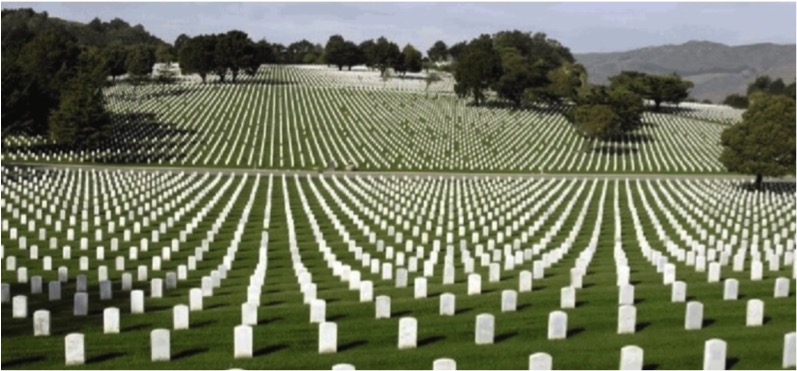 Arlington National Cemetery. Photo Source: patch.com
Arlington National Cemetery. Photo Source: patch.com
The date of May 30 was chosen for the first Decoration Day because it was not the anniversary of any particular battle. By 1890, each Northern state had made Decoration Day a state holiday, whereas the Southern states celebrated “Confederate Memorial Day” and ignored the United States Decoration Day until after World War I. In fact, nine southern states still celebrate losing the Civil War on Jefferson Davis’s birthday, the day Thomas Jackson was killed, or on dates commemorating other symbolic events of that doomed endeavor.
In 1971, the Uniform Monday Holiday Act went into effect, moving Memorial Day permanently to the last Monday in May.
Memorial Day traditions include the wearing of red poppies, real or fabric, which began when Canadian Lt. Colonel John McCrae, inspired by the sight of poppies growing near the Second Battle of Ypres in World War I, wrote the poem “In Flanders Field.”
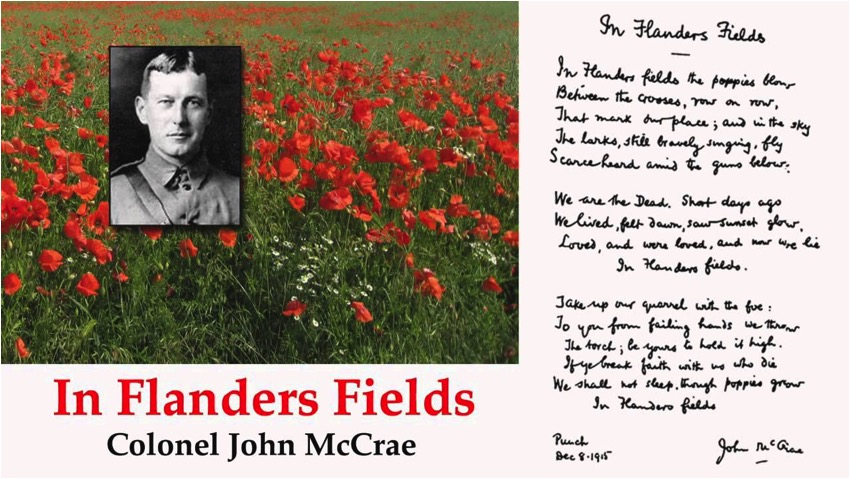
Georgia teacher Moina Michael read the poem later in Ladies Home Journal and began a campaign to make the poppy a symbol of tribute to all who died in war. Even today, you can find young ROTC members and others in grocery stores and markets selling fabric poppies near Memorial Day, usually to raise funds for veterans organizations.
Formal rituals for Memorial Day include hanging the flag of the United States at half-staff until noon that day, then raising it to the top of the staff. Pursuant to a piece of legislation from 2000, all citizens are encouraged to stop for a National Moment of Remembrance at 3:00 p.m. local time. For most of us, Memorial Day remains a day to remember the fallen soldiers of our country, and to decorate and care for their graves, wherever those graves may be. In Jacksonville, Friends of Jacksonville’ Historic Cemetery place small flags at the gravesites of all veterans. The flags remain in place through Veterans’ Day in November.
Sources Cited:
Gardiner, Richard, Associate Professor of History Education. “The Forgotten History of Memorial Day.” The Conversation, 20 Nov. 2020, theconversation.com/the-forgotten-history-of-memorial-day-97199.
Kingson, Jennifer A. “Memorial Day: The Tangled Back Story.” Axios, 27 May 2019, www.axios.com/memorial-day-the-tangled-backstory-0c75e9f8-9234-4cca-ac39-3f62316fc70c.html.
Maranzani, Barbara. “8 Things You May Not Know About Memorial Day.” History.com, A&E Television Networks, 24 May 2013, www.history.com/news/8-things-you-may-not-know-about-memorial-day.
Roos, Dave. “One of the Earliest Memorial Day Ceremonies Was Held by Freed African Americans.” History.com, A&E Television Networks, 24 May 2019, www.history.com/news/memorial-day-civil-war-slavery-charleston.
